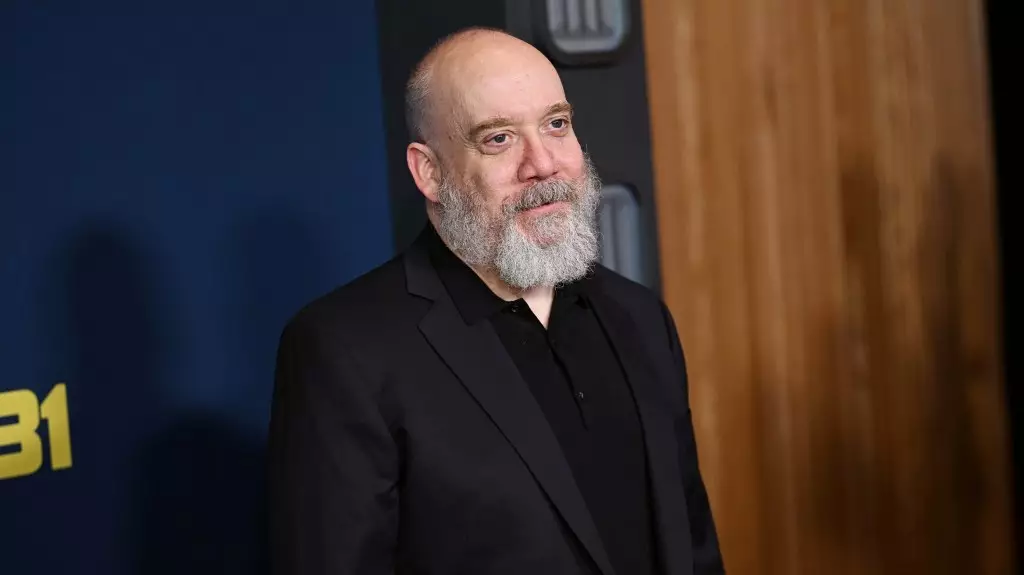In a world dominated by superficial portrayals and fleeting fame, there emerges a powerful reminder of the lasting impact a single individual can have on an entire narrative. Recently, Paul Giamatti, the noted American actor, spoke candidly about the upcoming film “Downton Abbey: The Grand Finale,” and how it bears the indelible mark of the late Dame Maggie Smith. The atmosphere surrounding this production is rife with bittersweet emotion. For both Giamatti and the audience, the project is not simply a continuation of a beloved series; it has transformed into a poignant tribute to a woman whose spirited performances resonated deeply with fans. When discussing the profound absence of Dame Maggie, who passed away in September 2024, Giamatti highlighted an essential truth: while her physical presence may be gone, her spirit remains, echoing in the performances blossoming in her shadow.
A Surprising and Significant Return
Giamatti’s admission regarding his surprise at being invited back to the “Downton Abbey” universe reveals a sobering truth about the entertainment industry: not all roles are created equal. Initially, the actor believed that his character, Harold Levinson—introduced in the Christmas special of Season 4—held little significance in the grand scheme of the series. Yet, the unfolding narrative has proven otherwise. In a delightful twist, it turns out the seemingly minor character possesses a surprisingly vital role in the latest film. This revelation emphasizes the idea that even the most incidental characters can weave themselves into the fabric of a storyline, serving a purpose far beyond initial expectations. Therein lies a critical commentary on our society: we often underestimate the value of contributions that may not appear significant at first glance.
The Collective Mourning
As Giamatti continued to articulate his thoughts, he observed how the cast embraced the idea of acting in the spirit of the late Smith, your heart can’t help but feel heavy with compassion. The loss of a pillar of strength—from both a narrative and personal perspective—is something palpable. The gravity of Smith’s absence was echoed by executive producer Gareth Neame, who confirmed that a “meaningful” tribute would be featured in the film. This added poignancy is not just a narrative device; it reveals a broader emotional truth. The layers of the cast’s performances may now carry the weight of grief that extends beyond character arcs, creating an authentic tapestry of loss that resonates deeply with viewers. The intricate bond between the cast and their characters reflects a unique perspective on how art imitates life and vice versa, intertwining themselves in a manner that is profoundly moving.
The Challenge of Legacy in Art
“Downton Abbey 3” is a cinematic marker for the series, one that juxtaposes the delicate nature of legacy against the backdrop of a fiercely competitive entertainment landscape. This dichotomy raises a compelling question: what does it mean to carry forward the legacy of someone as monumental as Dame Maggie Smith? The challenge is multifaceted; not only must the film honor her influence, but it must also navigate the tensions between nostalgia and innovation. It’s a balancing act that positions the filmmakers in a precarious arena, where audience expectations can clash with artistic intentions. Yet, in a landscape that often promotes forgettable and disposable content, “Downton Abbey: The Grand Finale” stands as a testament to the belief that honoring the past can inform and enrich the future of storytelling.
Emotional Authenticity Amidst a Star-Studded Cast
With a talented ensemble that also includes the likes of Joely Richardson and Michelle Dockery, the film measures up to high expectations—not merely as a sequel but as a celebration of a collective artistry. The actors find themselves in an emotionally charged atmosphere, not just for their characters but for the legacy of a woman whose performances have shaped the narrative landscape in which they operate. As Giamatti expressed, the motivation to embrace one’s craft becomes even more profound when underscored by the spirit of loss. This aspect of shared emotional authenticity contributes immensely to the film’s appeal and potential impact.
In the end, “Downton Abbey: The Grand Finale” stands not just as a film but as a cultural artifact, imbuing the simple act of storytelling with profound significance. It’s here, amidst the echoes of past performances and the pain of loss, where a new chapter begins—one that invites us to explore how we preserve the legacy of those who shaped our artistic landscape, even as they depart.

